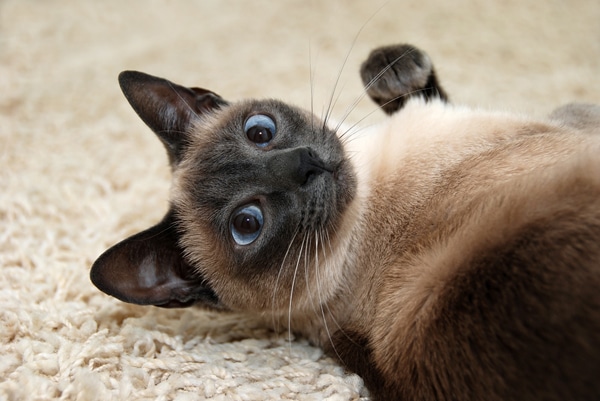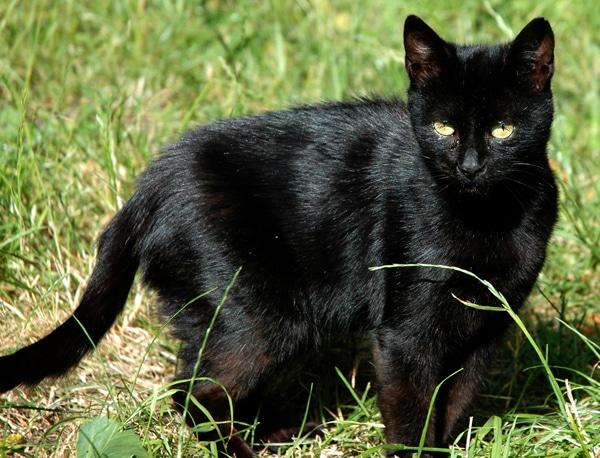The post Cat Colors: 4 Reasons Your Cat’s Fur Changes Over Time by JaneA Kelley appeared first on Catster. Copying over entire articles infringes on copyright laws. You may not be aware of it, but all of these articles were assigned, contracted and paid for, so they aren't considered public domain. However, we appreciate that you like the article and would love it if you continued sharing just the first paragraph of an article, then linking out to the rest of the piece on Catster.com.
You’ve probably seen cats who are clearly supposed to be black, but instead their fur is a reddish-brown color. Perhaps you’ve seen cats with dark fur on their sides and back as well as their tails, faces, and feet. Or maybe you’ve seen one of your own cats change color over the years. Here are a few factors that can influence cat colors and why cat fur might change colors over time.

1. Temperature can affect cat colors
In Siamese, Himalayan, and other Oriental cats, the color of cat fur is determined by the temperature of their skin. The skin is cooler at the body’s extremities — feet, tail, and ears/face — which is why they have white or cream-colored bodies and darker “points.” But skin temperature isn’t the only determining factor. The temperature of the cat’s environment can have a similar effect: My mother’s Siamese cat gets darker in the cold Maine winter months.

2. Sun can change the color of cat fur
Believe it or not, dark-colored cats can get bleached in the sun. If your cat is outdoors a lot, or if she spends her time laying in sunny areas indoors, her fur may lighten.
3. Nutrition plays a role in cat colors
A diet deficient in the amino acid tyrosine can cause black cats’ hair color to change from black to reddish. Tyrosine is needed to make melanin, the dark pigment in cat fur, and if a cat doesn’t get enough tyrosine in his diet, his ebony fur may fade. Other nutritional issues such as copper deficiency and zinc excess can cause black fur to lighten, too. Be sure to consult your veterinarian before giving your cat any supplements, though, because a change in fur color could also indicate kidney, liver, or thyroid disease.
4. Cat colors can change with age
As cats get older, they start getting gray hair just like humans do. But unless your cat is dark in color, you probably won’t notice the silver strands creeping in. The fur of seal-point Siamese and other dark-pointed Oriental breeds also darkens with age. Siamese kittens are born white and only begin to develop their colored points once they’re outside their mother’s womb, so this phenomenon is probably a continuation of that process.
As always, any time you’re unsure about something that’s going on with your cat, your best resource is your veterinarian.
Read Next: 7 Cool Facts About Cat Eye Colors
The post Cat Colors: 4 Reasons Your Cat’s Fur Changes Over Time by JaneA Kelley appeared first on Catster. Copying over entire articles infringes on copyright laws. You may not be aware of it, but all of these articles were assigned, contracted and paid for, so they aren't considered public domain. However, we appreciate that you like the article and would love it if you continued sharing just the first paragraph of an article, then linking out to the rest of the piece on Catster.com.
JaneA Kelley